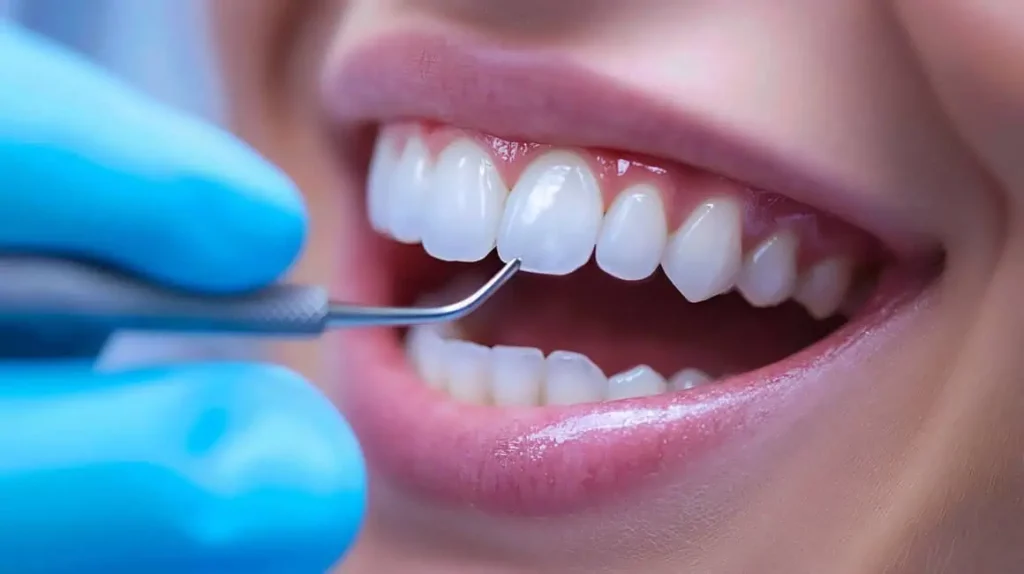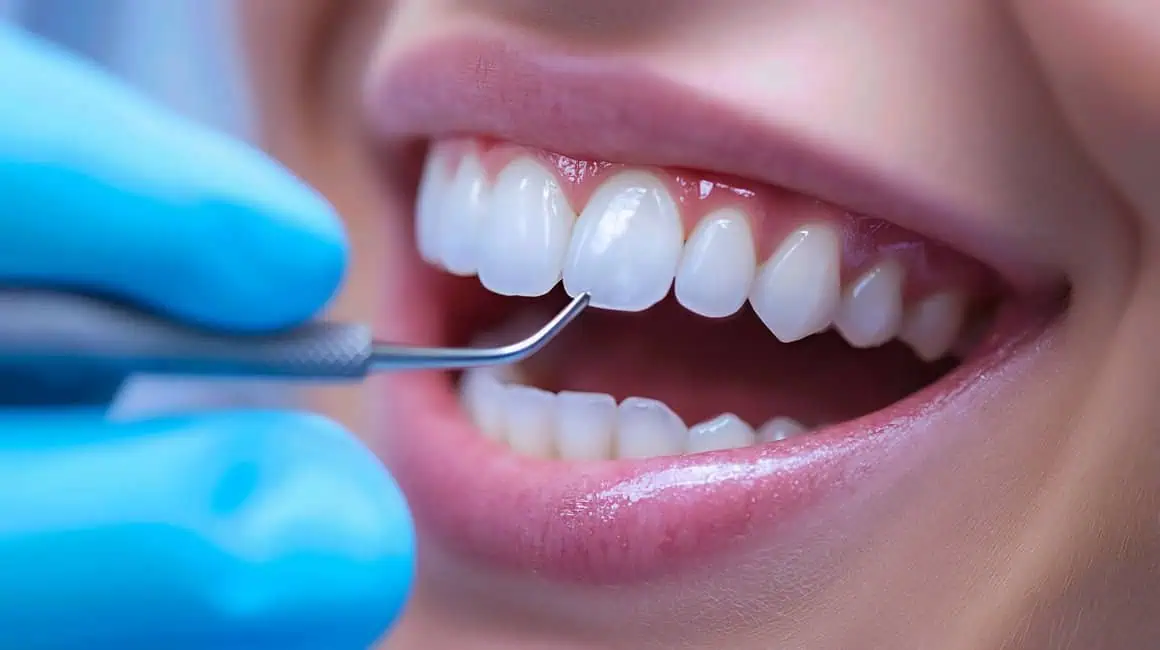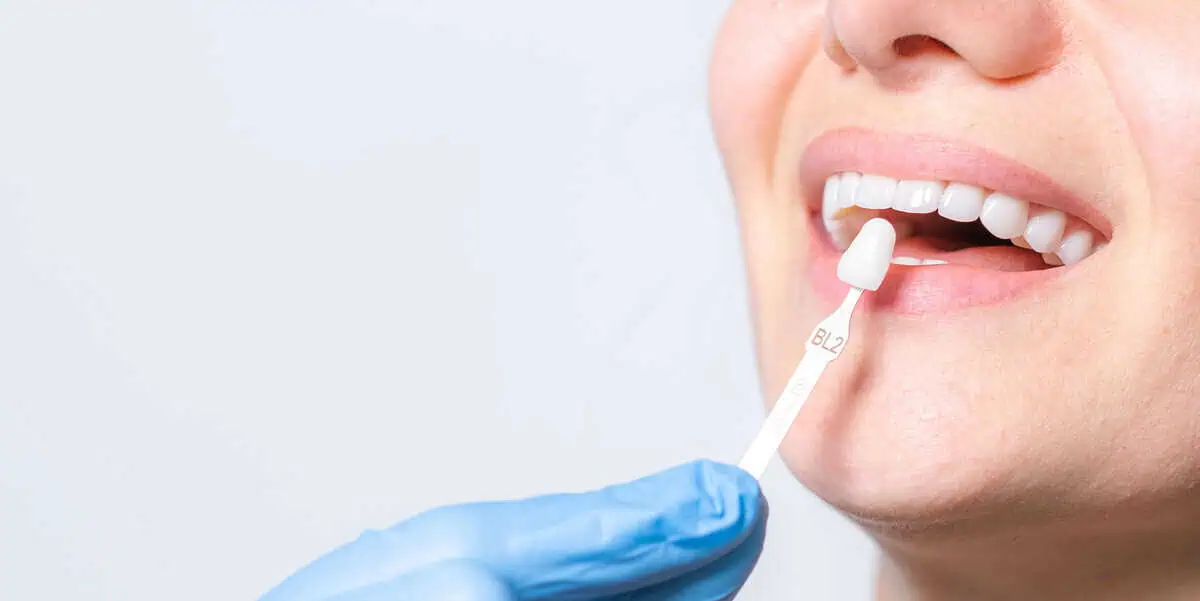
Table of Contents
Maintaining a healthy smile isn’t just about appearances—it’s an investment in your overall health. Tooth decay and dental damage are common concerns, but they don’t have to be permanent problems. Even the most worn-down or damaged teeth can be brought back to life with the right care. That’s where restorative dentistry comes in.
At Kelly Smile Design, restorative dentistry is more than a treatment—it’s a customized approach to rebuilding your confidence, protecting your health, and giving you back the smile you love. Let’s explore what restorative dentistry involves, how it helps with preventing tooth decay and damage, and why it’s a smart choice for lasting oral health.
What Is Restorative Dentistry?
“Restorative dentistry” describes dental procedures for repairing broken or decaying teeth. The goal is to restore teeth’s function and appearance while preventing future issues.
Unlike cosmetic dentistry, which focuses on appearance alone, restorative procedures are designed to address the underlying structure and health of teeth and gums. This includes everything from fillings and crowns to dental implants and bridges. Whether you have a small cavity or missing teeth, restorative dentistry provides solutions that strengthen your bite, improve oral hygiene, and help you feel more comfortable day to day.
Common Causes of Tooth Damage and Decay
The first step in preventing dental problems is to understand their underlying causes. Among the most common offenders are:
Bad Oral Hygiene Practices: When brushing and flossing are inconsistent, plaque accumulates, eventually causing decay and gum disease.
Diet Rich in Acids and Sugars: Eating acidic meals, sugary snacks, or drinks frequently erodes enamel and feeds germs that cause cavities.
Teeth Grinding (Bruxism): Erodes tooth surfaces and increases the risk of fractures.
Physical Trauma: Accidents, sports injuries, or biting hard objects can chip or crack teeth, exposing them to bacteria and further damage.
Existing Dental Issues: Untreated cavities, old fillings, and worn dental work can all contribute to ongoing tooth problems.
Fortunately, restorative dentistry benefits patients at every stage—whether you’re proactively treating a new issue or correcting long-standing damage.
The Most Common Restorative Dentistry Treatments
At Kelly Smile Design, treatment plans are personalized to meet your needs. Some of the most effective tooth repair options include:
- Fillings: Fillings restore teeth damaged by minor to moderate decay. Today’s tooth-colored materials blend seamlessly with natural teeth and offer durable protection.
- Dental crowns: To restore strength, form, and function to a severely damaged or weak tooth, a crown can be put over it. Crowns are frequently used to repair fractured teeth or following a root canal.
- Bridges: A dental bridge can replace one or more lost teeth with a substitute that looks natural and is held up by implants or neighboring healthy teeth.
- Dental implants: An enduring treatment for lost teeth is an implant. They create a sturdy, safe, natural-looking replacement for a tooth’s visible area and root.
- Inlays and Onlays: For teeth that are not yet suitable for a crown but are too damaged for a filling, inlays and onlays provide a conservative way to strengthen and preserve the tooth.
- Root Canal Therapy: A root canal can salvage a tooth when decay has spread to the inner pulp by eliminating the infection and sealing the tooth with a crown or filling.
Each of these treatments plays a role in restoring damaged teeth and supporting your long-term oral health.
Restorative Dentistry for Cavities and Tooth Health
Cavities are one of the most common dental problems, but that doesn’t mean you have to live with them. With modern treatment options, even extensive decay can be addressed effectively.
Treating Cavities Early: When caught early, small cavities can often be repaired with a simple filling. This prevents further damage and protects the tooth’s structure.
Addressing Larger Areas of Decay: If decay spreads or affects the nerve, a root canal followed by a crown may be the most appropriate treatment.
Replacing Severely Damaged Teeth: When a tooth cannot be saved, restorative dentistry offers reliable replacement options, such as implants or bridges, to preserve function and aesthetics.
No matter the situation, restorative dentistry for tooth health offers a path forward that supports your smile and confidence.
How to Prevent Tooth Damage in The Future
Prevention is the best kind of dental care. Once your smile has been restored, here’s how to keep it healthy for years to come:
Maintain Regular Oral Hygiene: Use fluoride toothpaste twice daily, floss daily, and, if your dentist advises it, think about using an antimicrobial mouthwash.
Protect Your Teeth from Injury: To prevent unnecessary harm, wear a mouthguard when playing sports or grinding your teeth at night.
Watch What You Eat: Cut back on sugary snacks and acidic drinks that weaken enamel and encourage bacterial growth.
Schedule Regular Dental Checkups: Seeing your dentist twice yearly helps catch problems early and ensures your restorations are properly maintained.
The good news? The same team that helps restore your smile can help you learn exactly how to prevent tooth damage in the future.
Who’s a Good Candidate for Restorative Dentistry?
Restorative dentistry isn’t just for people with extensive damage. It’s ideal for anyone who wants to:
- Repair a chipped or cracked tooth
- Treat decay or infection
- Replace one or more missing teeth
- Improve bite alignment or chewing function
- Boost their oral health and confidence
Whether you’ve been dealing with pain, avoiding certain foods, or feeling self-conscious when you smile, it’s worth talking to a qualified provider about your options.
Restorative Dentistry in Chicago, IL – What to Expect
At Kelly Smile Design, patients receive personalized care that fits their goals, budget, and lifestyle. Here’s what the process typically looks like:
Step 1 – Comprehensive Exam
Your dentist will evaluate the condition of your teeth, gums, and bite using visual exams, X-rays, and other diagnostics.
Step 2 – Customized Treatment Plan
You’ll receive a detailed plan outlining the best tooth repair options based on your oral health needs and preferences.
Step 3 – Comfortable, Precise Treatment
Whether you’re getting a filling or a full-mouth restoration, procedures are designed for comfort, safety, and accuracy.
Step 4 – Ongoing Support and Maintenance
After your restorations, routine care and follow-up visits ensure your results last and your smile stays strong.
If you’re looking for restorative dentistry in Chicago, IL, our team is ready to help you regain your confidence.
The Long-Term Benefits of Restorative Dentistry
Still deciding whether to move forward? Consider the many ways restorative treatment can improve your life:
- Restores chewing and speaking ability
- Boosts self-esteem and smile aesthetics
- Reduces dental pain and sensitivity
- Improves digestion by allowing proper chewing
- Supports emotional and social confidence
- Protects your investment with durable, natural-looking results
The benefits of restorative dentistry speak for themselves, from preserving natural teeth to providing a long-term fix for tooth loss.
Ready for a Smile Refresh? Let’s Make It Happen
There’s no reason to live with dental damage when reliable, proven solutions are available. Whether you need a quick fix or a comprehensive treatment plan, restorative dentistry offers a clear path forward.
Get the smile you’ve always wanted – Book your appointment now! Kelly Smile Design is proud to offer expert restorative care tailored to your needs. Schedule your consultation today and take the first step toward a healthier, happier smile.







